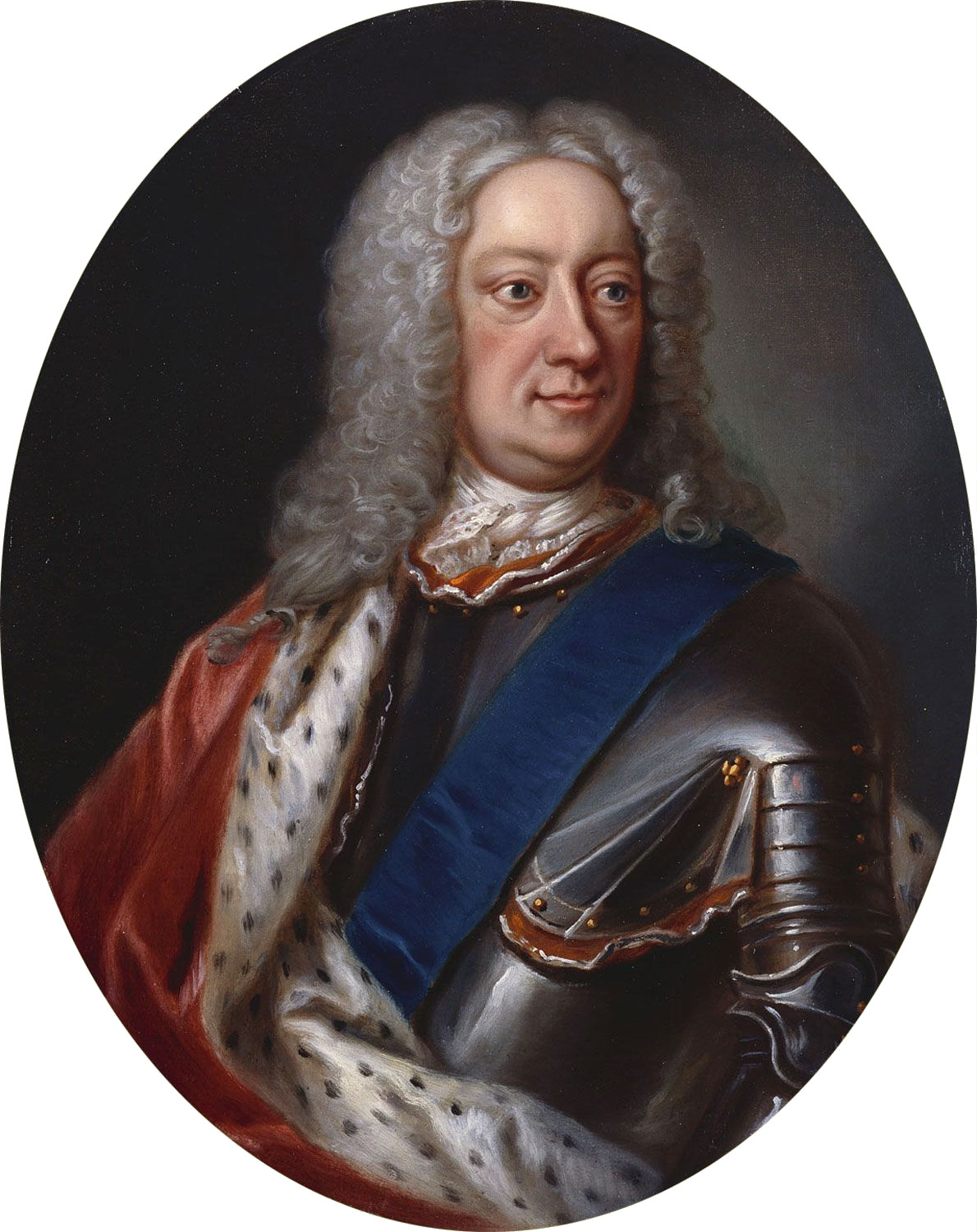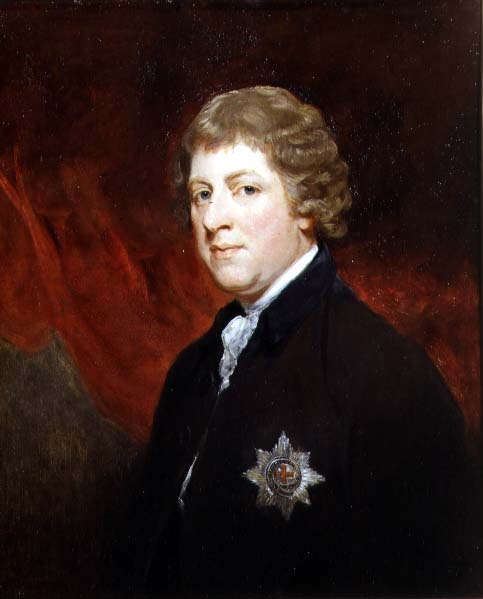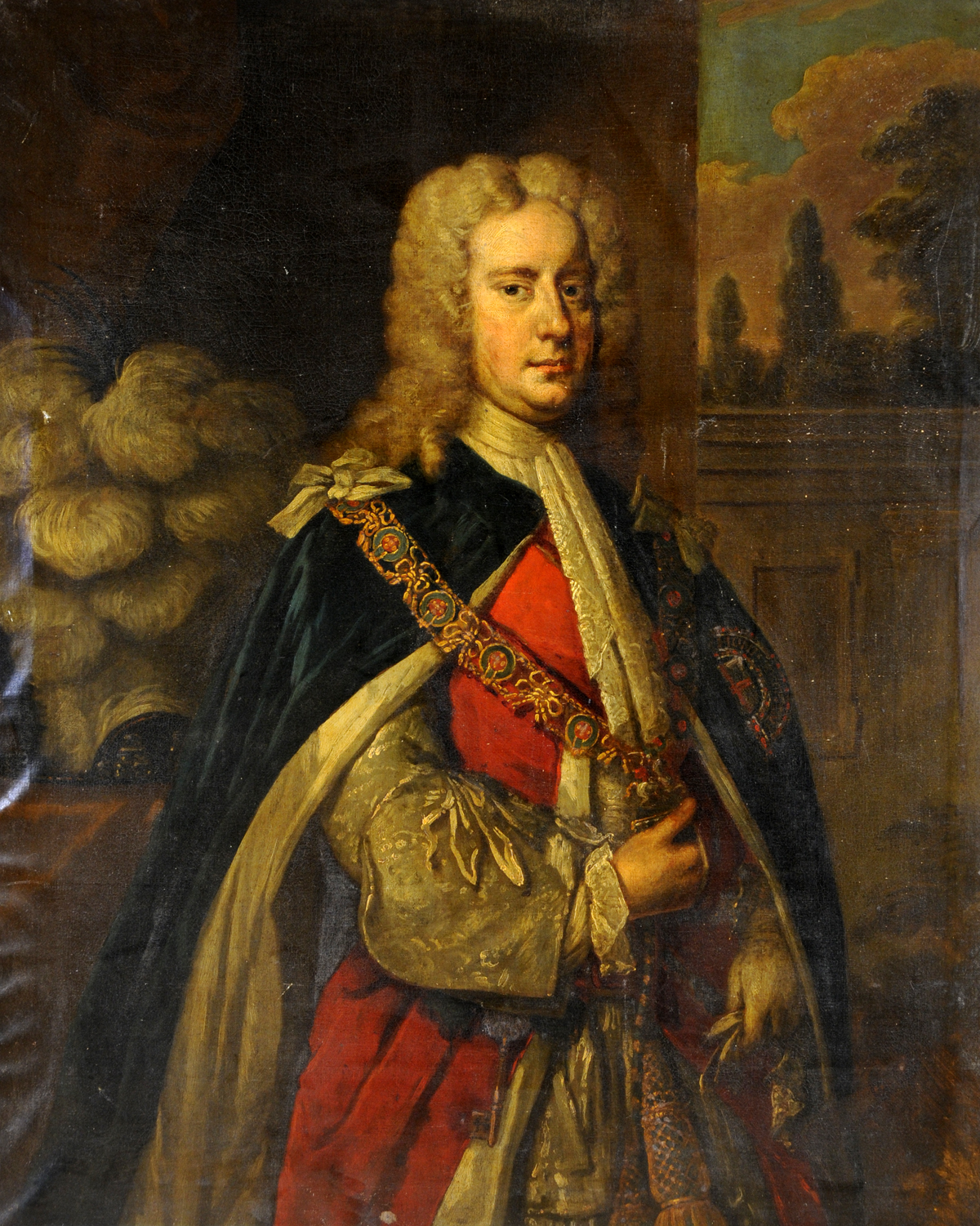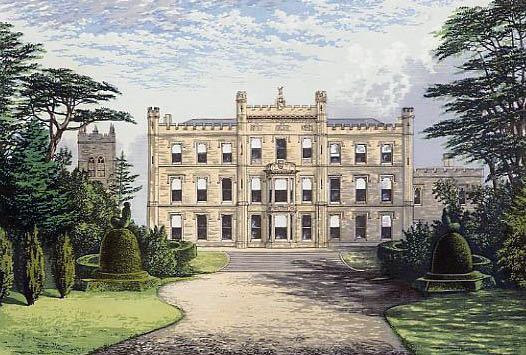|
Carteret Ministry
The Carteret ministry was the Whig government of Great Britain that held office from 1742 to 1744, following the defeat of the Walpole ministry by a margin of one vote. The nominal head of the ministry was Spencer Compton, 1st Earl of Wilmington, until his death in 1743. He was succeeded in the role of prime minister by Henry Pelham. The ministry derives its name from John Carteret, 2nd Baron Carteret. He served as Northern Secretary throughout until his resignation, having been the mainstay of whom the respective prime ministers were dependent for support. Ministry Notes Works cited * * Further reading * * * {{Kingdom of Great Britain British ministries Government A government is the system or group of people governing an organized community, generally a State (polity), state. In the case of its broad associative definition, government normally consists of legislature, executive (government), execu ... 1742 establishments ... [...More Info...] [...Related Items...] OR: [Wikipedia] [Google] [Baidu] |
The Earl Of Wilmington
Spencer Compton, 1st Earl of Wilmington (1673 – 2 July 1743) was a British Whig statesman who served continuously in government from 1715 until his death in 1743. He sat in the English and British House of Commons between 1698 and 1728, and was then raised to the peerage and sat in the House of Lords. He served as prime minister of Great Britain from 1742 until his death in 1743. He is considered to have been Britain's second prime minister, after Robert Walpole, but worked closely with the Secretary of State, Lord Carteret, in order to secure the support of the various factions making up the government. Early life and education Spencer Compton was born in 1673 in Compton Wynyates, a Tudor castle in Warwickshire. He was the third son of James Compton, 3rd Earl of Northampton, who fought for the royalists during the English Civil War and his wife Mary Noel, daughter of Baptist Noel, 3rd Viscount Campden. His father died in 1681 when Spencer was young and his brother, Geo ... [...More Info...] [...Related Items...] OR: [Wikipedia] [Google] [Baidu] |
John Carteret, 2nd Baron Carteret
John Carteret, 2nd Earl Granville, 7th Seigneur of Sark (; 22 April 16902 January 1763), commonly known by his earlier title Lord Carteret, was a Kingdom of Great Britain, British statesman and Lord President of the Council from 1751 to 1763 and worked closely with the Prime Minister of the country, Spencer Compton, 1st Earl of Wilmington, Spencer Compton, Earl of Wilmington, to manage the various factions of the Government. He was Seigneur of Sark from 1715 to 1720, when he sold the fief. He held (in absentia) the office of Bailiff (Channel Islands), Bailiff of Jersey from 1715 to 1763. Origins He was the son and heir of George Carteret, 1st Baron Carteret (1667–1695) by his wife, Grace Carteret, 1st Countess Granville, Lady Grace Granville (c. 1677–1744), ''suo jure'' 1st Countess Granville, 3rd daughter of John Granville, 1st Earl of Bath (1628–1701) of Stowe, Kilkhampton, Stowe House in the parish of Kilkhampton in Cornwall. The progeny of the marriage, Barons Ca ... [...More Info...] [...Related Items...] OR: [Wikipedia] [Google] [Baidu] |
Thomas Pelham-Holles, 1st Duke Of Newcastle
Thomas Pelham-Holles, 1st Duke of Newcastle upon Tyne, 1st Duke of Newcastle-under-Lyne (21 July 1693 – 17 November 1768) was an English Whigs (British political party), Whig statesman who served as Prime Minister of the United Kingdom, Prime Minister of Great Britain, and whose official life extended throughout the Whig supremacy of the 18th century. He is commonly known as the Duke of Newcastle. A protégé of Robert Walpole, he served under him for more than 20 years until 1742. He held power with his brother, prime minister Henry Pelham, until 1754. He had then served as a Secretary of State (United Kingdom), Secretary of State continuously for 30 years and dominated British foreign policy. After Henry's death, Newcastle was prime minister for six years in two separate periods. While his first premiership was not particularly notable, Newcastle precipitated the Seven Years' War, and his weak diplomacy cost him his premiership. After his second term, he served briefly in ... [...More Info...] [...Related Items...] OR: [Wikipedia] [Google] [Baidu] |
Secretary Of State For The Southern Department
The secretary of state for the Southern Department was a position in the Cabinet (government), cabinet of the government of the Kingdom of Great Britain up to 1782, when the Southern Department (Great Britain), Southern Department became the Home Office. History Before 1782, the responsibilities of the two British Secretary of State (United Kingdom), secretaries of state for the Northern Department, Northern and the Southern departments were divided not based on the principles of modern ministerial divisions, but geographically. The secretary of state for the Southern Department was responsible for Kingdom of Ireland, Ireland, the Channel Islands, Kingdom of France, France, History of Spain (1700–1808), Spain, Kingdom of Portugal, Portugal, the Old Swiss Confederacy, the states of Italian Peninsula, Italy, and the Ottoman Empire. He was also responsible for the British America, American colonies until 1768, when the charge was given to the Secretary of State for the Colonie ... [...More Info...] [...Related Items...] OR: [Wikipedia] [Google] [Baidu] |
John Carteret, 2nd Earl Granville
John Carteret, 2nd Earl Granville, 7th Seigneur of Sark (; 22 April 16902 January 1763), commonly known by his earlier title Lord Carteret, was a British statesman and Lord President of the Council from 1751 to 1763 and worked closely with the Prime Minister of the country, Spencer Compton, Earl of Wilmington, to manage the various factions of the Government. He was Seigneur of Sark from 1715 to 1720, when he sold the fief. He held (in absentia) the office of Bailiff of Jersey from 1715 to 1763. Origins He was the son and heir of George Carteret, 1st Baron Carteret (1667–1695) by his wife, Lady Grace Granville (c. 1677–1744), ''suo jure'' 1st Countess Granville, 3rd daughter of John Granville, 1st Earl of Bath (1628–1701) of Stowe House in the parish of Kilkhampton in Cornwall. The progeny of the marriage, Barons Carteret, Earls Granville, and Marquesses of Bath (Thynne), were co-heirs to her childless nephew William Granville, 3rd Earl of Bath (1692–1711). T ... [...More Info...] [...Related Items...] OR: [Wikipedia] [Google] [Baidu] |
Secretary Of State For The Northern Department
The secretary of state for the Northern Department was a position in the Cabinet (government), Cabinet of the government of Kingdom of Great Britain, Great Britain up to 1782. Following this, the Northern Department became the Foreign Office, and the position evolved into the Foreign Secretary (United Kingdom), foreign secretary. History Before the Act of Union, 1707, the Secretary of State's responsibilities were in relation to the Kingdom of England, English government. Even after the Union, there was still a separate Secretary of State for Scotland, secretary of state for Scotland until 1746, though the post was sometimes vacant. This continued the previous Scottish government post of Secretary of State (Kingdom of Scotland), Secretary of State. Before 1782, the responsibilities of the two Secretary of State (United Kingdom), secretaries of state for the Northern and the Southern Department (Great Britain), Southern Departments were not divided up in terms of area of author ... [...More Info...] [...Related Items...] OR: [Wikipedia] [Google] [Baidu] |
George Cholmondeley, 3rd Earl Of Cholmondeley
George Cholmondeley, 3rd Earl of Cholmondeley ( ; 2 January 1703 – 10 June 1770), styled as Viscount Malpas from 1725 to 1733, was a Kingdom of Great Britain, British Whig (British political party), Whig politician and nobleman who sat in the British House of Commons, House of Commons from 1724 to 1733. Life Cholmondeley was the son of George Cholmondeley, 2nd Earl of Cholmondeley, and Elizabeth van Ruyterburgh (or Ruttenburg). He was elected to the British House of Commons, House of Commons for East Looe (UK Parliament constituency), East Looe in 1724, a seat he held until 1727, and then represented Windsor (UK Parliament constituency), Windsor between 1727 and 1733, when he succeeded his father as third Earl of Cholmondeley and entered the House of Lords. He held office under his father-in-law Sir Robert Walpole as a Lord of the Admiralty from 1727 to 1729, as a Lord of the Treasury from 1735 to 1736 and as Chancellor of the Duchy of Lancaster from 1736 to 1743 (from 1742 t ... [...More Info...] [...Related Items...] OR: [Wikipedia] [Google] [Baidu] |
John Leveson-Gower, 1st Earl Gower
John Leveson-Gower, 1st Earl Gower, PC (10 August 1694 – 25 December 1754) was a British Tory politician who served as Lord Privy Seal from 1742 to 1743 and again from 1744 to 1754. Leveson-Gower also served in the Parliament of Great Britain, where he sat in the House of Lords as a leading member of the Tories, prior to switching his political affiliation and serving in various Whig-led government ministries until his death in 1754. Born in London into the prominent Leveson-Gower family, Leveson-Gower was educated at Westminster School and the University of Oxford. After his father died in 1709, he assumed his peerage as Baron Gower and before taking his seat in the House of Lords. Leveson-Gower proceeded to acquire a political power base consisting of four parliamentary boroughs under his ''de facto'' control: Newcastle-under-Lyme, Stafford, Lichfield, and Cheadle. In 1742, Leveson-Gower started serving in the Carteret ministry as Lord Privy Seal. Though he resigned ... [...More Info...] [...Related Items...] OR: [Wikipedia] [Google] [Baidu] |
Lord Privy Seal
The Lord Privy Seal (or, more formally, the Lord Keeper of the Privy Seal) is the fifth of the Great Officers of State (United Kingdom), Great Officers of State in the United Kingdom, ranking beneath the Lord President of the Council and above the Lord Great Chamberlain. Originally, its holder was responsible for the monarch's Privy Seal of England, personal (privy) seal (as opposed to the Great Seal of the Realm, which is in the care of the lord chancellor) until the use of such a seal became obsolete. Though one of the oldest offices in European governments, it has no particular function today because the use of a privy seal has been obsolete for centuries; it may be regarded as a traditional sinecure, but today, the holder of the office is invariably given a seat in the Cabinet of the United Kingdom, and is sometimes referred to as a Minister without portfolio (United Kingdom), minister without portfolio. Since the premiership of Clement Attlee, the position of Lord Privy S ... [...More Info...] [...Related Items...] OR: [Wikipedia] [Google] [Baidu] |
William Stanhope, 1st Earl Of Harrington
William Stanhope, 1st Earl of Harrington ( 1683 – 8 December 1756), was a British statesman and diplomat. Life William Stanhope was born in 1683 at the family home in Elvaston, Derbyshire, third surviving son of John Stanhope and Dorothy Agard. His elder brother Charles Stanhope (1673–1760) was also a politician and deeply involved in the South Sea Company financial scandal, while his cousin James Stanhope (1673–1721) is considered an alternative candidate to Robert Walpole for the title of Britain's first Prime Minister. He married Anne Griffiths, who died in 1719 giving birth to twin sons, William, 2nd Earl of Harrington (1719–1779), and Thomas (1719–1743). Career Educated at Eton College, Stanhope was commissioned in 1703 as a lieutenant in the 2nd Foot Guards during the War of the Spanish Succession, before transferring to the 3rd Foot Guards in Spain. By 1710, he was a lieutenant-colonel and missed the December 1710 Battle of Brihuega, when the Britis ... [...More Info...] [...Related Items...] OR: [Wikipedia] [Google] [Baidu] |
Lord President Of The Council
The Lord President of the Council is the presiding officer of the Privy Council of the United Kingdom and the fourth of the Great Officers of State, ranking below the Lord High Treasurer but above the Lord Keeper of the Privy Seal. The Lord President usually attends and is responsible for chairing the meetings of the Privy Council, presenting business for the approval of the Sovereign. The office and its history The Privy Council meets once a month, wherever the sovereign may be residing at the time, to give formal approval to Orders in Council. Only a few privy counsellors need attend such meetings, and only when invited to do so at the government's request. As the duties of the Lord President are not onerous, the post has often been given to a government minister whose responsibilities are not department-specific. In recent years it has been most typical for the Lord President also to serve as Leader of the House of Commons or Leader of the House of Lords. The Lord Pre ... [...More Info...] [...Related Items...] OR: [Wikipedia] [Google] [Baidu] |
Philip Yorke, 1st Earl Of Hardwicke
Philip Yorke, 1st Earl of Hardwicke, (1 December 16906 March 1764) was an England, English lawyer and politician who served as Lord High Chancellor of Great Britain. He was a close confidant of the Duke of Newcastle, Prime Minister between 1754 and 1756 and 1757 until 1762. Background A son of Philip Yorke, an lawyer, attorney, he was born at Dover. Through his mother, Elizabeth, daughter and co-heiress of Richard Gibbon of Rolvenden, Kent, he was connected with the family of Edward Gibbon the historian. He was educated at a school in Bethnal Green run by Samuel Morland (dissenting tutor), Samuel Morland, a nonconformist. At age 16, Yorke entered the attorney's office of Charles Salkeld in Holborn, London. He was entered at the Middle Temple in November 1708, and perhaps recommended by his employer to Lord Chief Justice Parker as law tutor to his sons. In 1715, Yorke was called to the bar, where his progress was, according to John Campbell, 1st Lord Campbell, Lord Campbell, ... [...More Info...] [...Related Items...] OR: [Wikipedia] [Google] [Baidu] |







